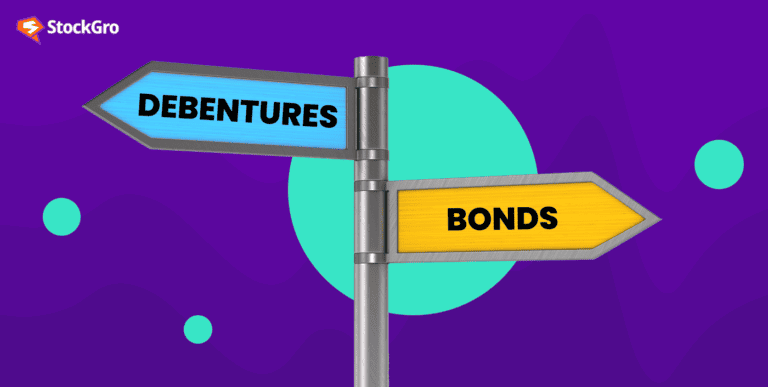
Feeling a bit lost in the maze of investment options and confusing terminology? Curious about how to diversify your portfolio beyond the dramatic ups and downs of the stock market? You’re not alone! The bond market is often the unsung hero of the investment world, overlooked for its flashier competitors. This blog is your roadmap to understanding and benefiting from this rich landscape.
What is a bond?
Think of a bond like a promise between friends. When you buy a bond, you’re basically lending your money to someone—maybe a government or a company. In return, they promise to pay you a little extra money (called “interest”) over a certain time. At the end of that period, you’ll get back the money you lent them. It’s a way to grow your money, but with less risk compared to things like stocks.
What is the bond market?
Picture a busy farmers’ market, but instead of selling fruits and veggies, people are there to buy and sell these promises, or bonds. That’s the bond market for you. It’s usually a less risky place to invest your money than the stock market. So, if you’re looking for something a bit safer, the bond market might be your thing.
Types of bond markets
Now, within the world of bonds, there are two main stages or “markets”—the Primary Market and the Secondary Market. They both play different roles in the life of a bond.
Primary market – the starting point
The primary market is like the birthplace of a bond. This is where new bonds come into the world. Governments or companies create these bonds because they need to borrow money, and they’re looking for people to lend it to them. They set the terms like how much extra money you’ll get (the interest rate) and how long they’ll borrow your money for (maturity date). Usually, you’ll buy these new bonds at their original price, known as face value. Both big-time investors and everyday people can buy these bonds.
Secondary market – the trading hub
After bonds are born in the primary market, they move to the secondary market. Here, people who already own bonds can sell them to others. Unlike the primary market, the price of bonds here can change depending on a bunch of factors like supply and demand or what’s happening in the economy. This is good news for smaller, individual investors because it means you can buy or sell bonds whenever you want, without having to wait for them to mature.
You may also like: SGBs: A smarter way to invest in gold
Different kinds of bonds you should know about
One of the best things about the bond market is its diversity. Let’s discuss the types of bonds available in the market, especially in India.
1. Convertible bonds
What are they?
These aren’t your ordinary bonds. Convertible bonds give investors the option (or sometimes the obligation) to transform their bonds into shares of the issuing company at specific intervals. The conversion rate and share value are pre-set by the company.
Varieties of convertible bonds:
- Standard convertible bonds: These give investors the choice to convert into shares, with a set conversion rate and maturity date. They’re the most commonly issued by companies.
- Mandatory convertible bonds: These require the investor to convert the bond into company shares when it matures, usually offering a higher interest rate as an incentive.
- Reverse convertible bonds: Here, it’s the issuer who has the right to convert the bond into shares.
Perks for investors:
Alongside regular interest payments, you have the upside potential if the company’s stock performs well.
Perks for companies:
Immediate capital influx without immediate share dilution, often at a lower interest rate compared to standard corporate bonds.
Also read: What is the Efficient Market Hypothesis?
2. Government bonds
What are they?
When governments need money, often for large-scale infrastructure projects, they issue these bonds, which are seen as extremely reliable investments.
Government bonds types – Infographic
| Type of Government Bond | Features |
| Fixed-rate bonds | Interest rate is fixed for the entire tenure |
| Floating rate bonds | Interest rate is variable and tied to market rates |
| Sovereign Gold Bonds | Investment in digital form of gold |
| Inflation-Indexed Bonds | Interest and principal vary with inflation |
Types of government bonds:
- Fixed-rate bonds: These offer a constant interest rate throughout the bond’s lifespan, despite market fluctuations.
- Floating-rate bonds (FRBs): The interest rates here are subject to periodic adjustments based on market conditions.
- Sovereign gold bonds: Allows you to invest in gold digitally.
- Inflation-Indexed Bonds: Their value rises with inflation, making them a good hedge.
- 7.75% GOI savings bond: Introduced in 2018, these offer a fixed interest of 7.75% and are aimed at individuals.
Why invest?
- Guaranteed by the government
- Inflation protection
- Consistent income stream
Drawbacks:
- Lower yield compared to other investment options
3. Municipal bonds
What are they?
Issued by municipal corporations, these bonds are meant to finance community projects.
Types:
- General obligation bonds: Backed by general municipal revenue.
- Revenue bonds: Focused on particular projects and repaid from project-specific revenue.
Benefits:
- High transparency
- Tax-free interest
- Low risk
Drawbacks:
- 3-year lock-in affects liquidity
- Low-interest rates
4. Retail bonds
What are they?
Companies issue these bonds to the public to raise capital, often for expansion or debt repayment. They are usually traded, offering flexibility to investors.
5. Junk bonds
What are they?
High-risk, high-reward bonds, these fall below investment grade as per major rating agencies.
Pros and cons:
- Potential for high returns
- Higher risk of default
- Price volatility
6. Electoral bonds
What are they?
These allow the public to financially support political parties. These parties must meet certain eligibility criteria under the Representation of the People Act, 1951.
Advantages and disadvantages:
- Enhances secure and digital election funding
- Fails to limit the formation of shell companies or foreign funding
Each bond type offers its own unique set of advantages and drawbacks, and understanding them can help you make informed decisions to meet your financial goals.
Also read: What is face value? The investment secret you need to know!
How does the bond market work?
Investing in bonds doesn’t have to be complicated. Here’s the step-by-step rundown:
- Research: Look into the different kinds of bonds out there. Each has its own set of rules and benefits.
- Financial advisor: Talk to a money expert to see which bonds are a good fit for you, based on how much risk you’re comfortable taking.
- Purchase: You can buy bonds either straight from the source (called the primary market) or from other people who already own them (known as the secondary market).
- Monitor: Keep an eye on when you’re supposed to get interest payments and when the bond matures, or reaches its end date.
- Trade or hold: You can either keep your bond until it matures or sell it to someone else before then, depending on your investment plan.
What Is Risk Tolerance?
Risk tolerance is about how much uncertainty you can handle in your investments. If you’re investing in something that makes you stressed or scared, you’re more likely to make rushed decisions like selling at the wrong time. Everyone’s comfort level with risk varies, and it’s often based on your age, money situation, investment goals, and past experiences.
Levels of risk tolerance
Aggressive risk tolerance: These are the daredevils of the investing world. They’re well-read and go after big wins, even if it means taking on a lot of risks. They usually bet on fast-moving markets like options or small companies.
Moderate risk tolerance: These folks strike a balance. Their investment pie is usually half steady, half risky, aimed for a medium-term plan of 5 to 10 years.
Conservative risk tolerance: These are generally older adults who want to keep their money safe. They go for low-risk options like really secure bonds or just putting their money in the bank.
Conclusion
Investing in bonds doesn’t have to be scary. Know the basics and what level of risk you’re okay with, and you’ll be well on your way to making choices that match your financial goals. Especially if you’re in India, where there are lots of options, bonds can be a less stressful way to navigate the world of investing. So, if you’re after a safer, more stable financial journey, bonds are worth considering.

